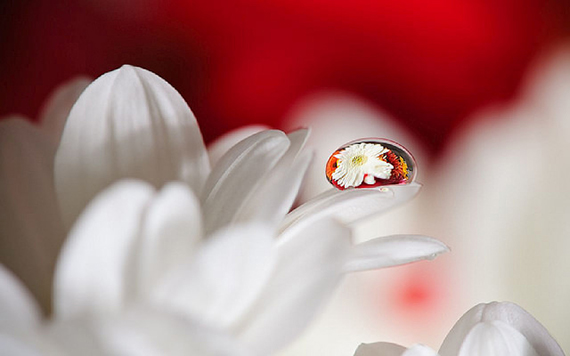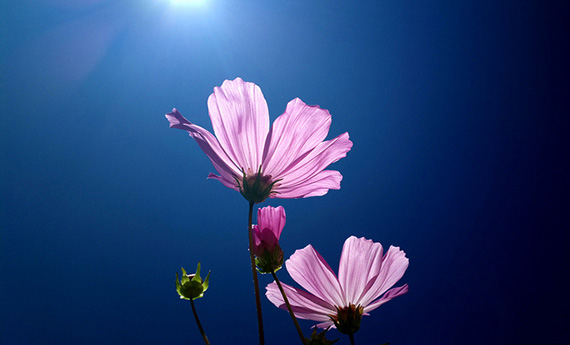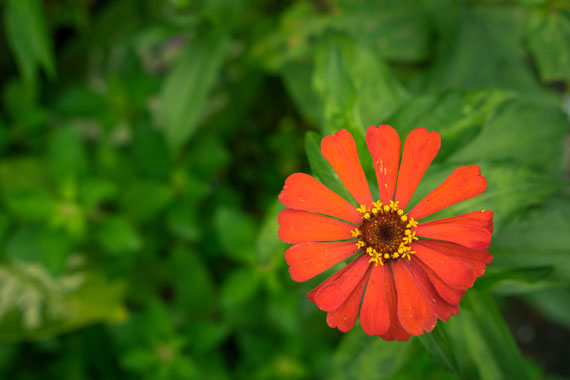You see them everywhere: flowers in full bloom. They are colorful and so easy to photograph. You can use them as art prints, backgrounds for images, Facebook cover images, or just for the joy of capturing the beauty of a flower. There are some tricks that can elevate your images beyond snapshot level, into images that really express a flower’s magic.
If you add only a handful of these approaches to your photography, you will be amazed at the results.
Camera Tricks
- Use a shallow depth of field. Set your f-stop or aperture to the lowest number you can. This gives you a sea of color while making one flower pop out.
- Try a slow shutter speed like 1/30, 1/15, or even 3 seconds on a windy or breezy day. This creates a wonderful pastel, emotional image.
- Get close in. Use a macro lens if you can. You will capture unique detail, rarely seen, that will delight the viewer–especially if you print it very large.
- Bring along some simple tools. Reflector cards open up shadows. Large cards can act as wind blocks. You can bring along a colored card or even a photo of a background to put behind the flower. Have the background go out of focus for a believable transition.
- Set your file size to as large as you can for prints and cropping options.

photo by maf04
Composition Tricks
- Get down low, at “eye” level with the flower. Unique angles make flower shots more interesting.
- Look for lines and shapes, like diagonals and S-shaped curves, to give the image a flow. Use them as foreground elements to frame your main subject.
- Photograph flowers really early in the morning or just as the sun goes down for rich, soft lighting.
- Spray water on flowers for that morning dew look at any time of day.
- Place your “key” flower in a position that utilizes the rule of thirds grid for most impact.
- Work with depth of field to isolate a single blossom or find one flower that is a different color than the rest. Find one flower that is somehow different than its surroundings.

photo by solarisgirl
Creative Tricks
- Use floral images as background elements to lay behind smaller images.
- Create a larger image and put real flowers in front of them.
- Use photographs of flowers as texture overlays for portraits.
- Create your own greeting cards.
- Add inspirational copy and print the photos or post them to mentally frame your day.
That old phrase, “stop and smell the roses” could also have you stopping to photograph the flowers. Blossoms don’t last long, but a well-planned photograph will enrich your life with a flower’s beauty forever.
About the Author:
Mark Laurie is a master photographer, international speaker, author, and studio mentor (InnerSpiritPhoto). He teaches extensively in England and Canada. His Revealing Glamour Photography Workshop is run in Italy. Mark has published seven books. You can find information on his books, photography, and training on his website.
Like This Article?
Don't Miss The Next One!
Join over 100,000 photographers of all experience levels who receive our free photography tips and articles to stay current:







When capturing wild flowers with a macro lens, I tend to live on the preview button. Even if you don’t have in mind exactly what you want to capture in terms of dof, this little button will be invaluable in showing you what your end result will be.
‘Spray water on flowers for that morning dew look at any time of day’: Nothing beats getting up early and get the real deal, a spray looks different than real dew
I agree with Matt on the aperture part, but it’s all about the effect you wish to achieve
My tip on this is just try with different apertures and see what works for you
Great tips! Need to practice more! Thanks!
Don’t entirely agree with this. A good proportion of flower photography will be macro style where to use the largest aperture you can, will mean the focal plane will be to small to capture hardly any of the image in focus. The rule of dof is the closer you get the shallower it becomes so quite routinely a macro will need f/10 – f/16 to enable a focal plane that will ensure the subject is in focus. When its close it will still throw the background out of focus.